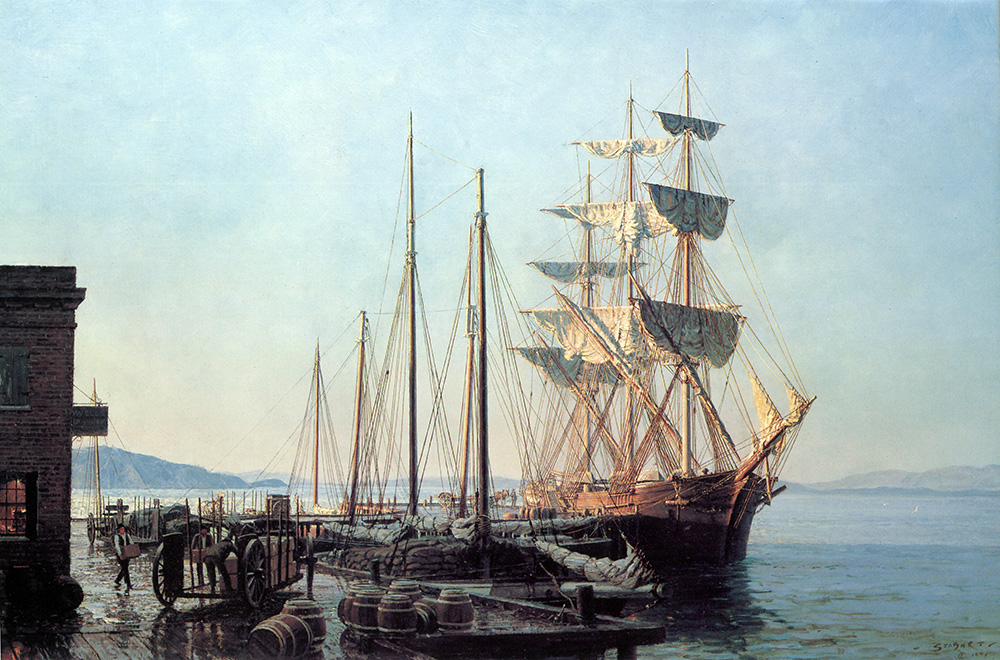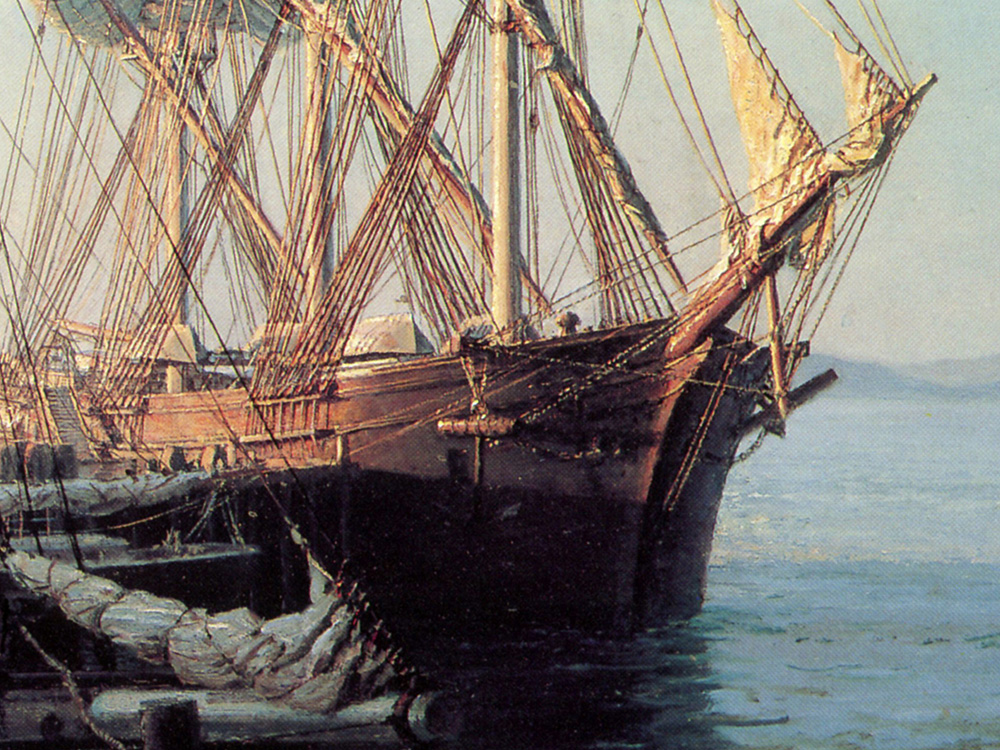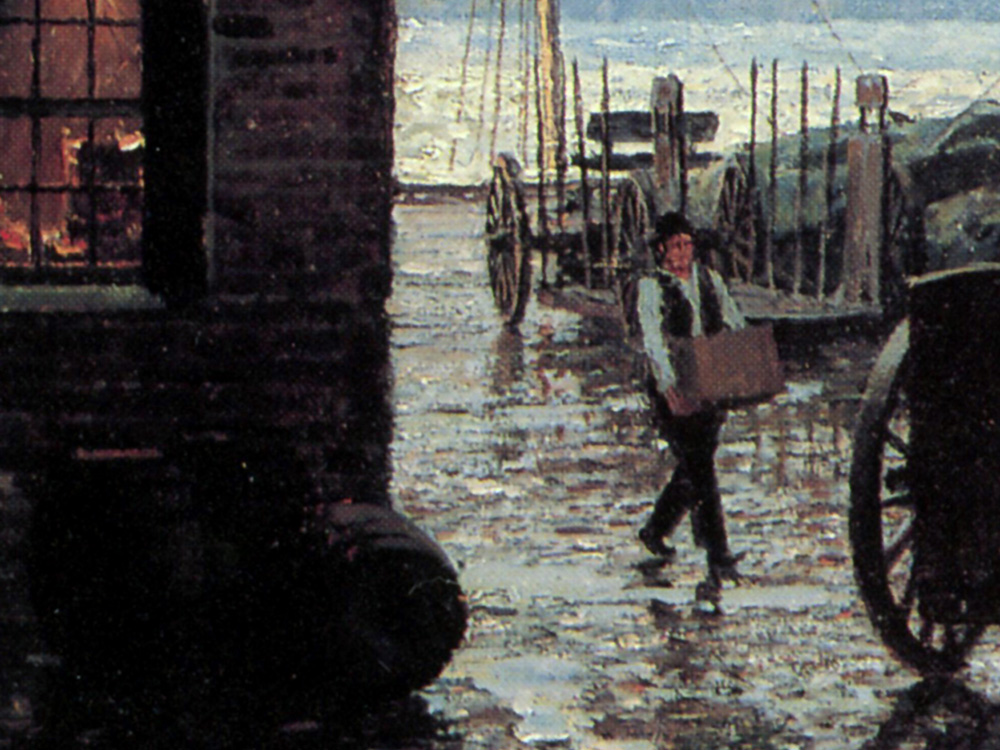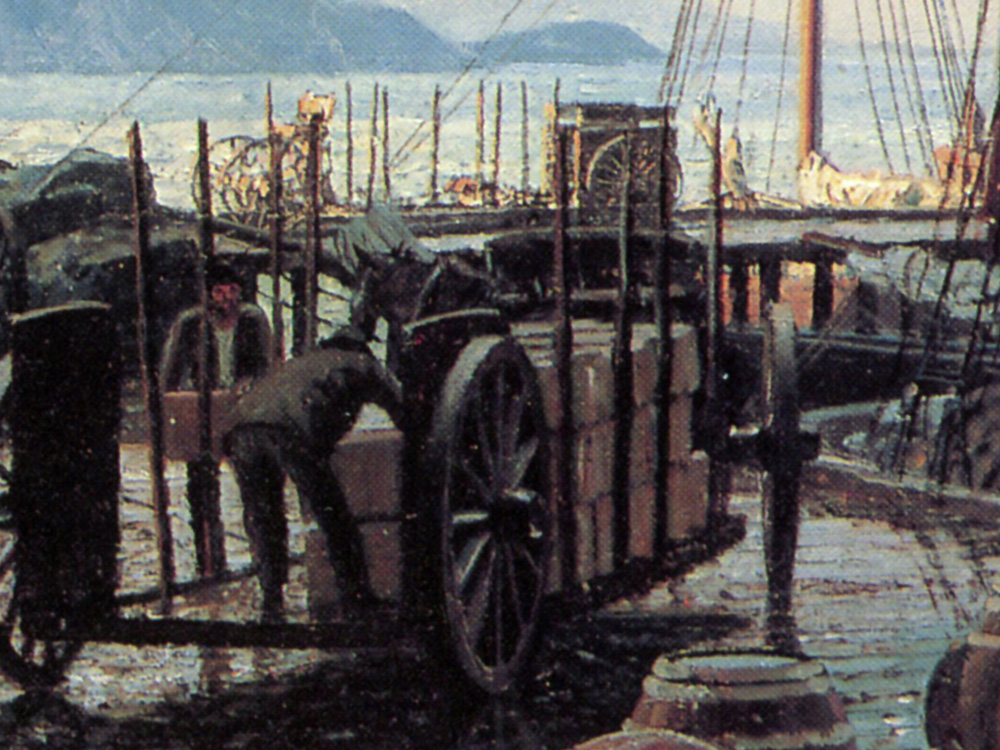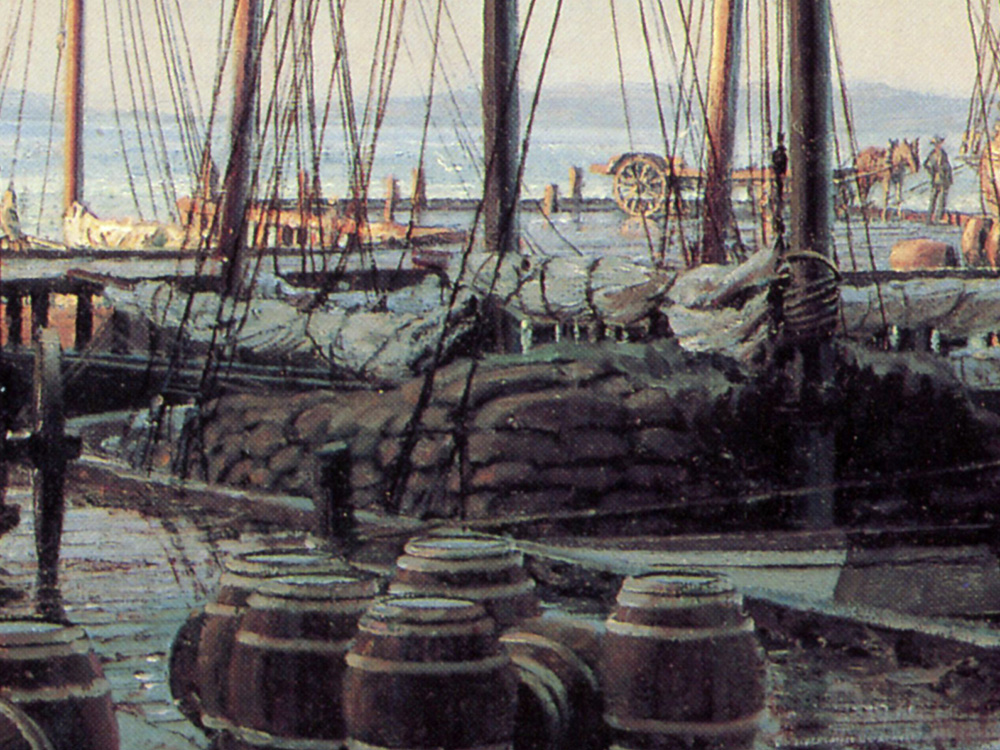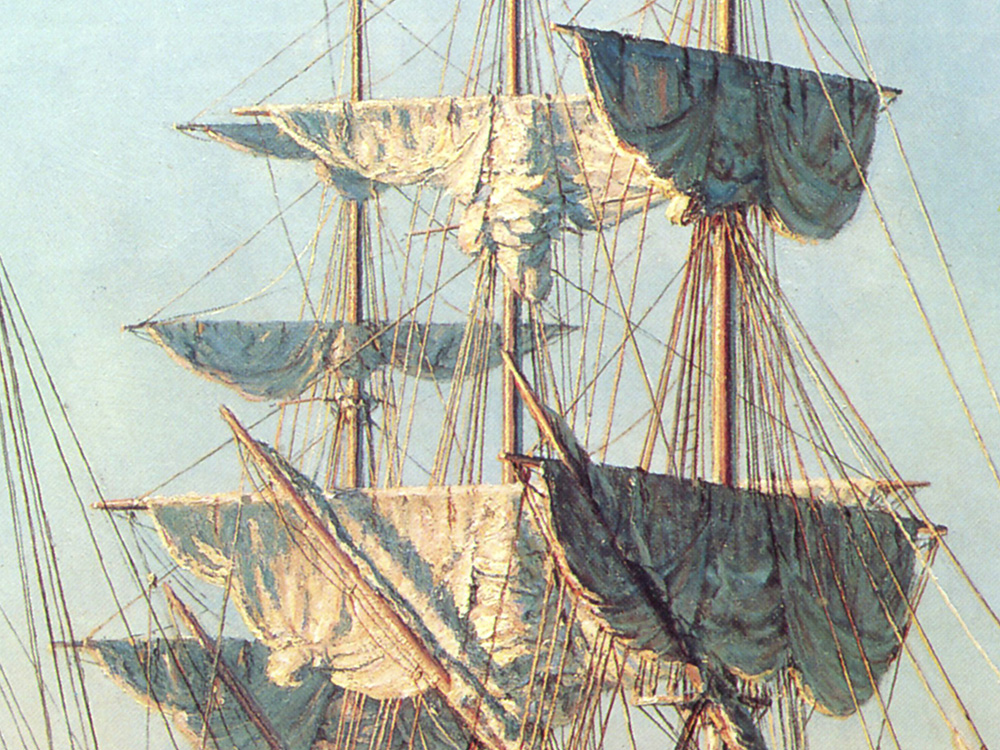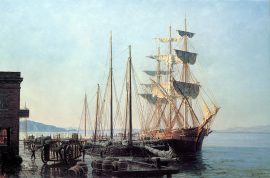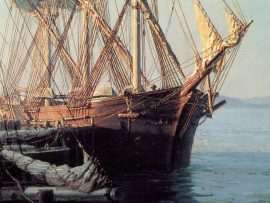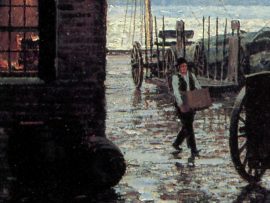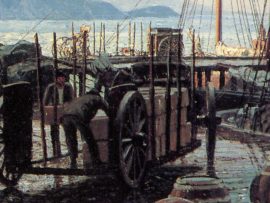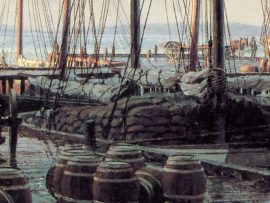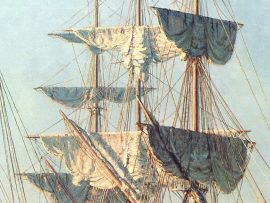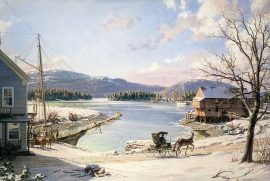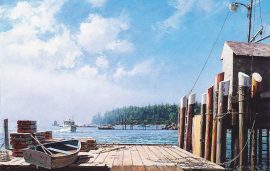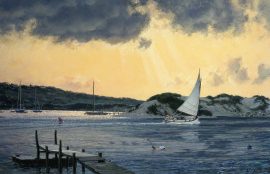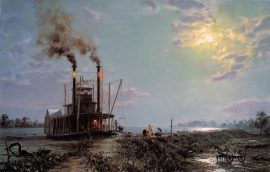San Francisco: Cowell’s Wharf in 1866
$1,000.00 Original price was: $1,000.00.$900.00Current price is: $900.00.
The inspiration behind this painting came from seeing an old daguerreotype of Cowell’s Wharf reproduced in a book on the growth of San Francisco’s port by West Coast historian Jim Gibbs. The research finally led me to a contact print of the glass-plate from San Francisco’s Maritime Museum. The view was from farther away than the vantage point I chose, but had enough relevant detail to allow me to be authentic.
I chose to show a bark at the wharf in a shaft of light from the setting sun which would bring the fore part of the wharf and all items on it into shadow. I particularly enjoyed the challenge, which I tried again later in the Milwaukee paining, to see what could be done to create as much interest as possible in the shaded foreground-to see how much local color I could extract within the shadow, which in a photograph of such a situation, would have appeared colorless, if not black, with the camera’s lens taking its cue from the shaft of light.
When the sun gets low on the horizon on a day with a clear sky, artificial light becomes essential within the darkening interiors, and so I also had a chance to have a glow of warmth coming from the left-hand warehouse.
This view, looking north, shows Angel Island, and to the right, Richmond in the distance. The high hills around the periphery of the bay nicely contain the interest within the composition. As on most occasions, I chose the bark rig to avoid the repetition that three square-rigged masts would show. The fore and the aft rigs of the mizzen mast give the subject an element of variety.
It is thanks to knowledgeable people like Jim Gibbs, editor of the Superior Publishing Company, that I have been inspired to tackle difficult subjects such as early San Francisco. His Book “San Francisco” vividly explains in pictures how the port developed, from the earliest old etchings to the present day. This allowed me the chance to study views of a scene from different vantage points. This is precisely what an artist needs to see in order to completely understand the subject’s surroundings.
| Weight | 6.00 lbs |
|---|---|
| Catalog: | Stobart-140 |
| Artist: | John Stobart |
| Dimensions: | 18" x 28" |
| Edition: | 750 |

